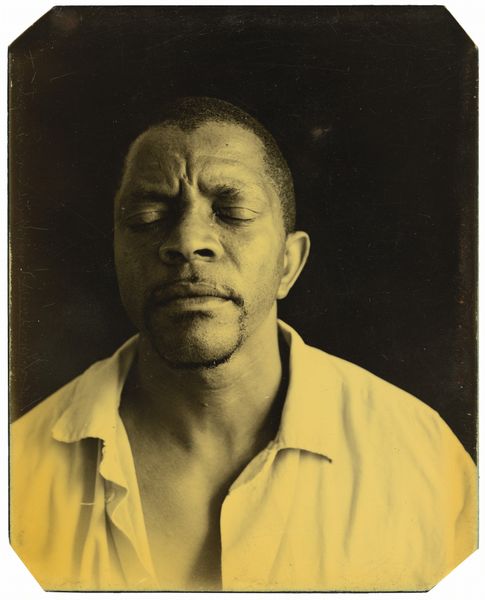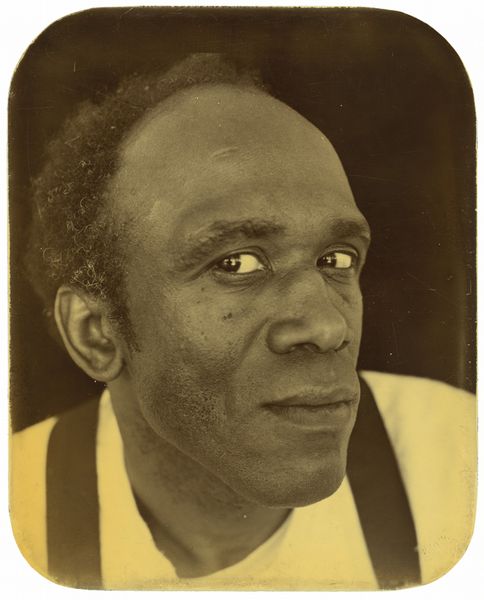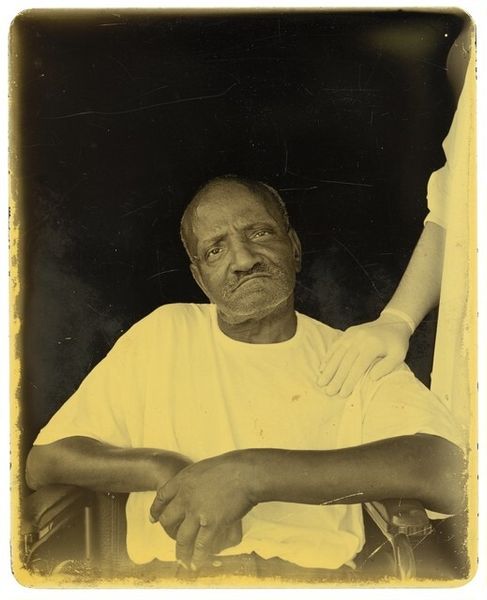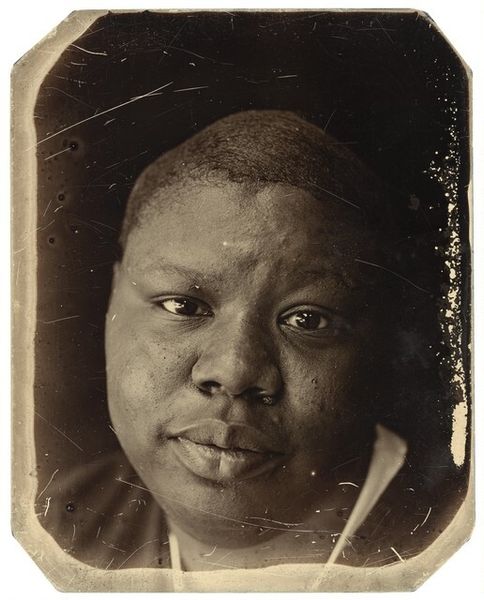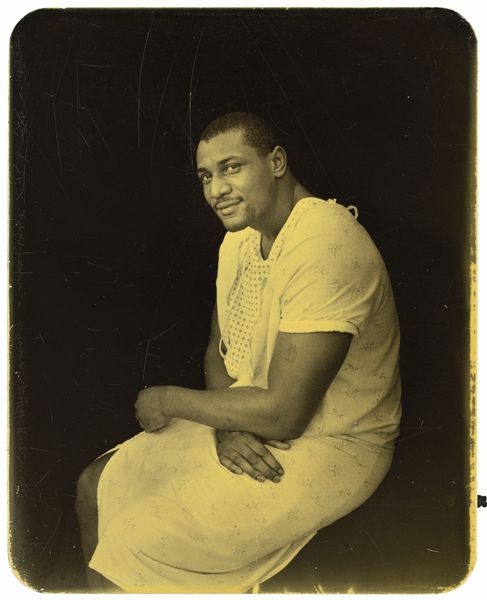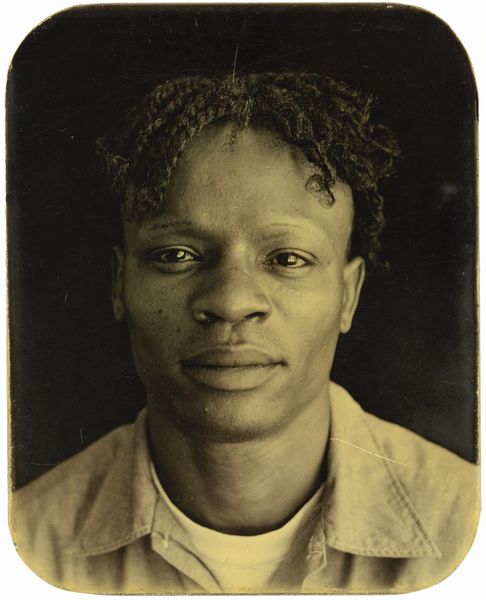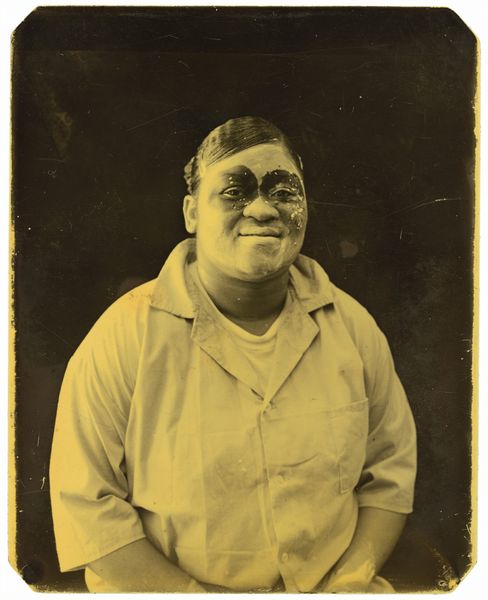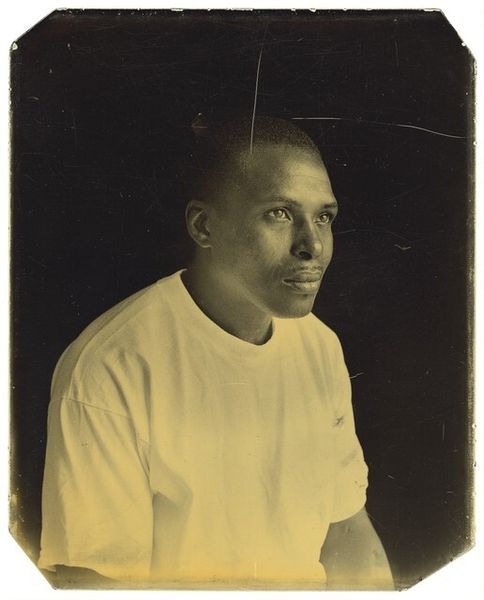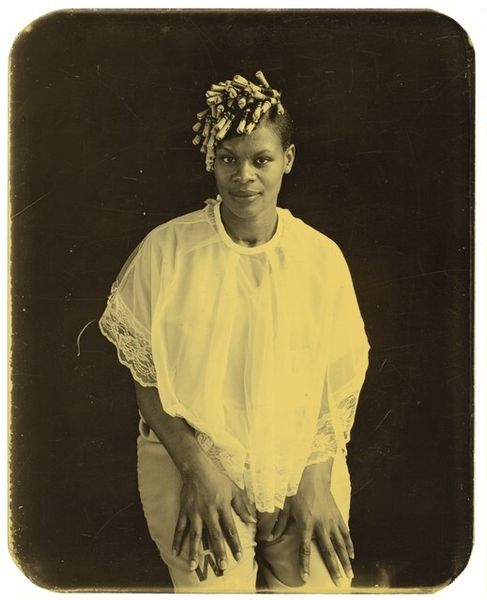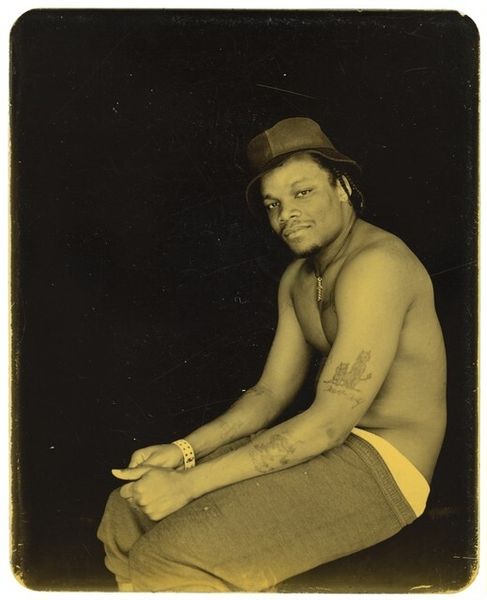
photography, gelatin-silver-print
#
portrait
#
low key portrait
#
portrait image
#
portrait subject
#
photography
#
portrait reference
#
portrait head and shoulder
#
single portrait
#
gelatin-silver-print
#
portrait art
#
fine art portrait
#
realism
#
celebrity portrait
#
digital portrait
Dimensions: image/plate: 12.7 × 10.2 cm (5 × 4 in.)
Copyright: National Gallery of Art: CC0 1.0
Editor: This gelatin-silver print, “Franklin Jones, Angola, Louisiana” by Deborah Luster, was taken in 1999. The somber tone and the man's gaze looking off to the side evoke a feeling of contemplation. What does this portrait reveal about its subject, in your opinion? Curator: This image, beyond a simple portrait, stages a powerful narrative. Luster's choice to photograph Franklin Jones in Angola—the Louisiana State Penitentiary—immediately situates the work within a historical and social context of incarceration and its impact, especially on African American communities. The gelatin-silver print technique evokes a historical aesthetic, reminiscent of earlier mugshots or anthropological documentation. Editor: That's fascinating! The reference to older mugshots changes everything about how I view the piece. Does his prison uniform further contribute to the photograph’s impact? Curator: Absolutely. The prison uniform, devoid of individuality, speaks volumes about institutional power and the erasure of identity. The “subject” of portraiture has historically been connected with nobility, royalty, and wealth. The very conscious artistic choice by Luster speaks of how we socially perform power relations between museums and the individuals. The photograph makes one question the ethical considerations surrounding such visual representations. Editor: So, the artwork goes beyond just portraying an individual. It serves as a critical commentary on a flawed system. Curator: Precisely. Luster invites us to reflect on how photographic representation participates in the social construction of criminality and how institutions influence our perception and judgment. It humanizes an individual within an inhumane system, forcing us to confront uncomfortable truths about justice and power. Editor: I hadn’t considered the deeper socio-political implications before. Now, seeing it in that light, the photograph seems so much more charged and unsettling. Curator: It’s in that unsettling space, where discomfort sparks inquiry, that art fosters dialogue and compels societal change. That, ultimately, becomes the social and historical impact and continued significance of Luster's poignant work.
Comments
No comments
Be the first to comment and join the conversation on the ultimate creative platform.
